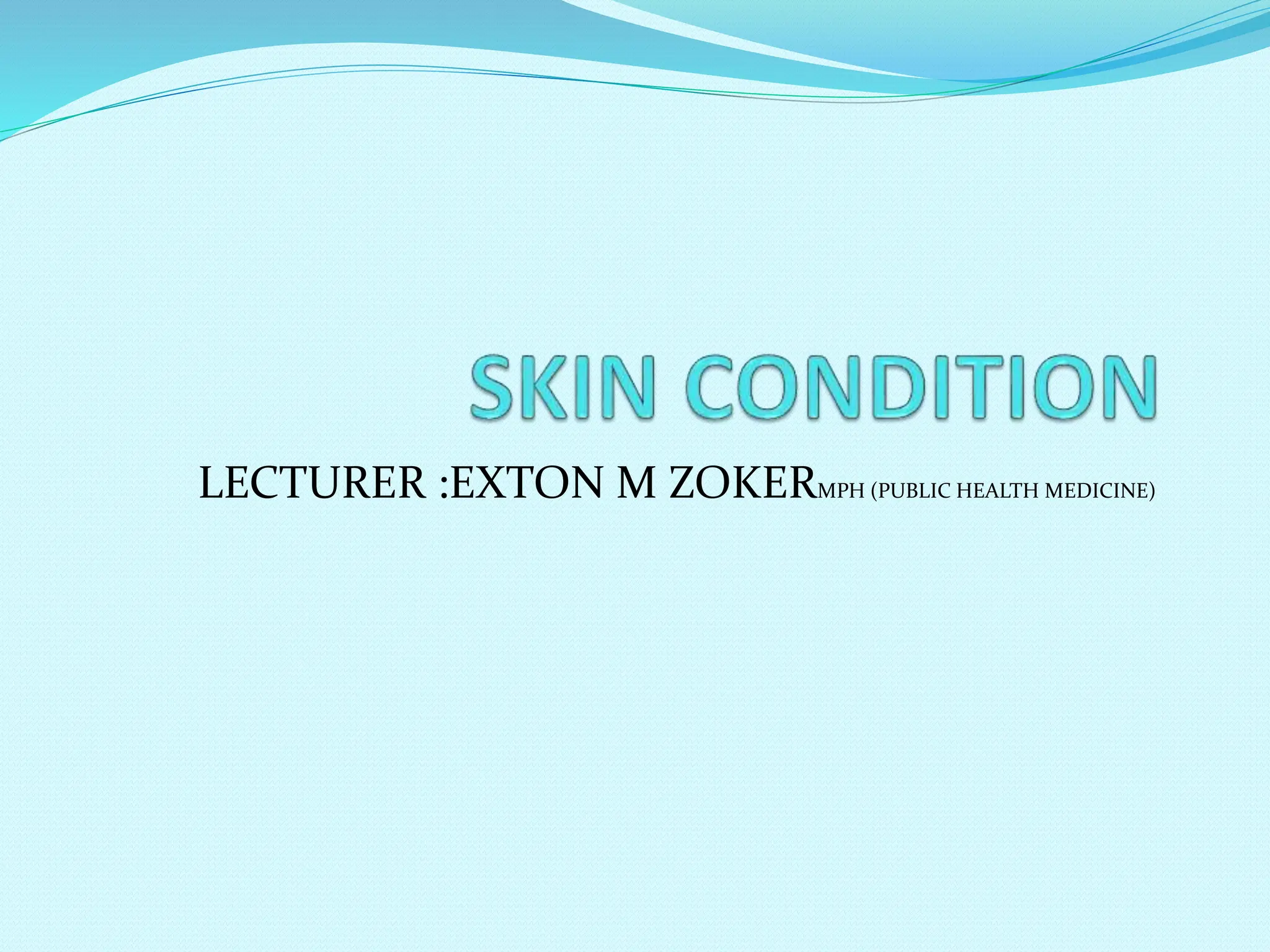This document provides an outline for a course on skin conditions. It begins by listing common skin conditions categorized by symptoms such as itching, pigmentation, crusts, vesicles, pustules, and macules. It then defines dermatology as the study of skin, nails, and hair and discusses the functions and facts about skin. The document outlines important aspects of dermatologic history taking and examination, including describing different types of skin lesions and how their configuration, texture, location, and distribution can provide clues to diagnosis.


































































































































